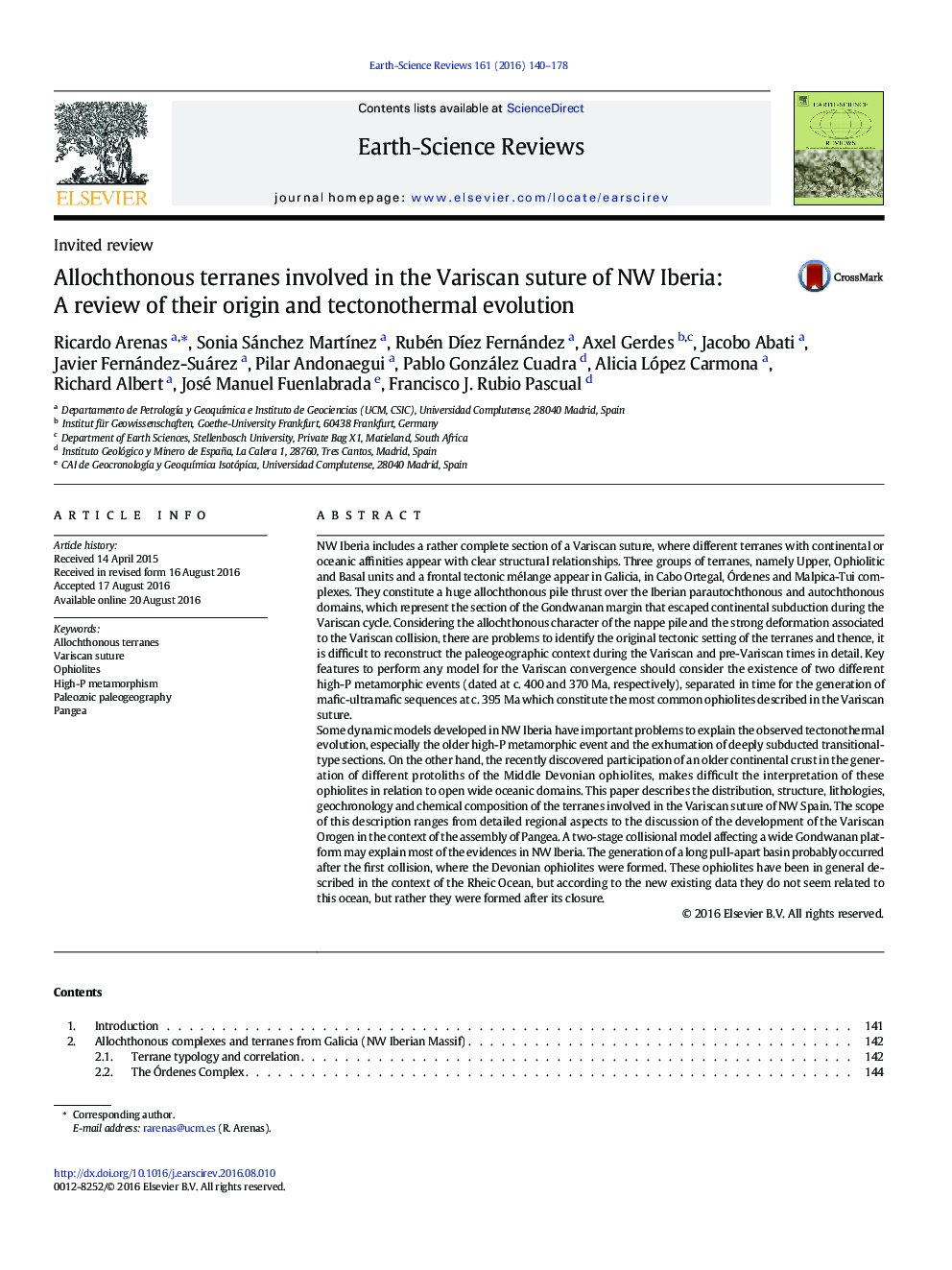| Article ID | Journal | Published Year | Pages | File Type |
|---|---|---|---|---|
| 6442787 | Earth-Science Reviews | 2016 | 39 Pages |
Abstract
Some dynamic models developed in NW Iberia have important problems to explain the observed tectonothermal evolution, especially the older high-P metamorphic event and the exhumation of deeply subducted transitional-type sections. On the other hand, the recently discovered participation of an older continental crust in the generation of different protoliths of the Middle Devonian ophiolites, makes difficult the interpretation of these ophiolites in relation to open wide oceanic domains. This paper describes the distribution, structure, lithologies, geochronology and chemical composition of the terranes involved in the Variscan suture of NW Spain. The scope of this description ranges from detailed regional aspects to the discussion of the development of the Variscan Orogen in the context of the assembly of Pangea. A two-stage collisional model affecting a wide Gondwanan platform may explain most of the evidences in NW Iberia. The generation of a long pull-apart basin probably occurred after the first collision, where the Devonian ophiolites were formed. These ophiolites have been in general described in the context of the Rheic Ocean, but according to the new existing data they do not seem related to this ocean, but rather they were formed after its closure.
Related Topics
Physical Sciences and Engineering
Earth and Planetary Sciences
Geology
Authors
Ricardo Arenas, Sonia Sánchez MartÃnez, Rubén DÃez Fernández, Axel Gerdes, Jacobo Abati, Javier Fernández-Suárez, Pilar Andonaegui, Pablo González Cuadra, Alicia López Carmona, Richard Albert, José Manuel Fuenlabrada,
